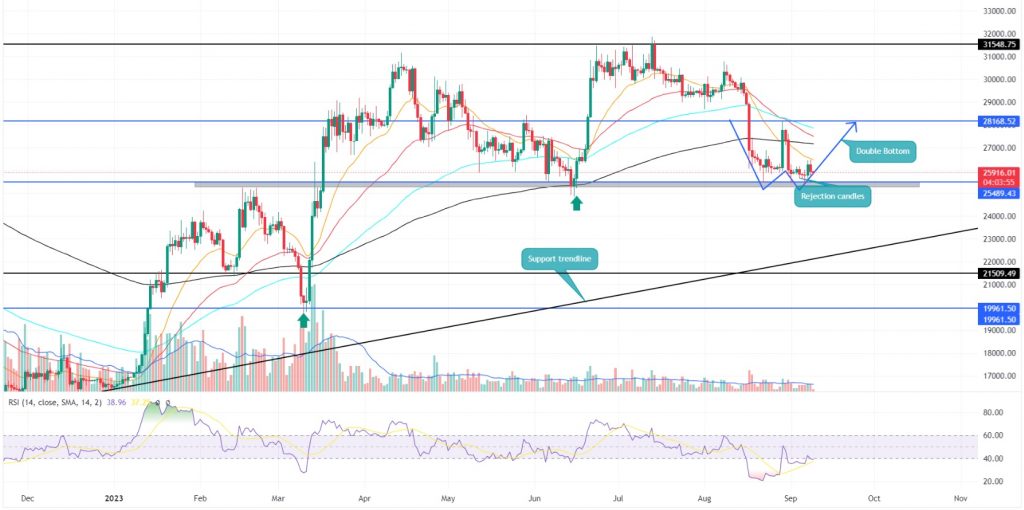The Federal Reserve recently expressed deep apprehensions about the rapidly expanding $120 billion stablecoin market, drawing attention to potential financial instability and the need for regulatory oversight. This warning from the Fed comes as Bitcoin and Ethereum face a prolonged “bearish trend,” causing concern among investors and enthusiasts.
Unsettling Concerns for the Crypto Market
Federal Reserve Vice Chair for Supervision Michael Barr raised serious concerns during a fintech conference at the Federal Reserve Bank of Philadelphia. According to Forbes, he articulated his worries about the surge in the stablecoin market during the event.
The official emphasized the risks the ongoing market conditions are posing to financial stability, monetary policy, and the broader US payments system. These concerns have sparked a growing debate on the future of stablecoins and their impact on the crypto market.
The Growing Influence of Stablecoins
Stablecoins, such as Tether’s USDT and Circle’s USDC, have witnessed significant growth over the past few years. These coins are closely intertwined with the value of major cryptocurrencies like Bitcoin and Ethereum. They serve as a bridge between the traditional financial world and the crypto sphere, offering stability by being pegged to fiat currencies like the US dollar.
The stablecoin market’s ballooning size, now at approximately $120 billion, has prompted fears of unregulated expansion. Barr singled out non-federally regulated stablecoins as potential sources of concern, given their lack of strong federal oversight. This has ignited a growing debate within the cryptocurrency community and among lawmakers regarding the need for comprehensive regulation.
Regulatory Battles in the United States
In response to the growing influence of stablecoins, US lawmakers find themselves in a race to establish a regulatory framework. Both Democrats and Republicans on the House Financial Services Committee are wrestling over the extent of state regulators’ autonomy in this matter. The objective is to strike the right balance and create a robust federal framework for all stablecoins.
The Federal Reserve Chair, in a June testimony before the committee, advocated for a strong federal role in stablecoin regulation. This sentiment underscores the urgency of developing a regulatory structure that ensures the stability and security of stablecoins within the broader financial ecosystem.
The Bearish Trend and What Lies Ahead
While the cryptocurrency market had shown promise earlier in the year, the recent developments have cast a shadow over its future. Bitcoin, for instance, has seen a notable decline, with some analysts warning of a potential “death cross,” a bearish signal where the 50-day moving average falls below the 200-day moving average. Ethereum, too, has encountered a similar trend, raising concerns among investors.
The continued bearish trend has left Bitcoin struggling to maintain its value, with analysts suggesting potential downside momentum. Ethereum, on the other hand, is already considered locally oversold. These challenges highlight the need for regulatory clarity and stability in the cryptocurrency market, particularly in the face of the growing influence of stablecoins.
Double Bottom Pattern and Recovery Hopes
Amidst the concerns and warnings surrounding the cryptocurrency market, it’s crucial to take a closer look at the present technical analysis of Bitcoin (BTC) to gain insights into its short-term price movements. Current technical chart readings from Coingape indicate the presence of substantial demand pressure at the $25,000 support level.
Moreover, there’s a notable bullish breakout potential if BTC manages to breach the $28,168 resistance barrier. This breakout could lead to an 8.5% surge in the coin’s price, presenting a more optimistic outlook for investors.
As of this writing on Sunday morning, the daily timeframe chart paints a picture of resilience among buyers at the $25,500 support level, with multiple lower-price rejection candles. This pattern suggests the possibility of a double-bottom formation, typically seen at the bottom of a downtrend. This pattern implies an increase in demand pressure, signaling a potential bullish reversal.

Based on the latest available data, BTC is trading at $25,900, showing a marginal intraday loss of 0.19%. If the current pattern unfolds as anticipated, it’s likely that buyers will overcome the $28,168 neckline resistance, serving as a strong signal for a bullish recovery. In such a scenario, BTC prices could potentially reach $31,548, offering a ray of hope for investors.
Despite multiple rejections at the $25,489 support level, buyers have struggled to establish a significant rebound. This reflects a certain weakness in bullish momentum and raises concerns about the $25,000 support level. A breakdown below $25,000 would invalidate the previously mentioned double-bottom pattern, potentially pushing BTC prices down to the $24,000 mark.
In addition to these price patterns, other technical indicators are worth monitoring. The Exponential Moving Average (EMA) shows the potential for a death crossover between the 50-day and 200-day EMAs which could encourage sellers, leading to prolonged consolidation. This crossover could have a significant impact on BTC’s short-term performance.
Meanwhile, despite the repeated testing of the $25,500 support level, the daily Relative Strength Index (RSI) slope suggests a significant rally that indicates rising accumulation by traders. This uptrend in RSI hints at growing confidence among investors, despite recent market challenges.
Final Thoughts
The Federal Reserve’s “deep concerns” regarding the $120 billion stablecoin market have injected uncertainty into the cryptocurrency landscape. On the other hand, after the Fed warning, Bitcoin is displaying some glimmer of hope for investors on the charts. Nevertheless, investors and traders are always advised to tread with caution over these contrasting scenarios.
Giancarlo is an economist by profession with a career spanning nearly two decades. His professional journey has seen him assume vital roles in various government and private organizations such as the Department of the Interior and Local Government (DILG), the National Economic and Development Authority (NEDA), Megaworld Corporation, and the China Banking Corporation in the Republic of the Philippines.
In addition to his civic and corporate pursuits, his forward-thinking approach has led him to manage several prominent websites in the banking and finance sector, notably the Australia-based RateChoice, where he immersed himself in the world of emerging financial technologies and where he found particular interest in Bitcoin all the way back to 2013.
Prior to his addition to Blockzeit’s dynamic team, he held an essential role as Project Manager for initiatives encompassing blockchain, stablecoin, mining, special economic zone development, and iGaming. This noteworthy chapter in his career unfolded under the auspices of InPlan Consultancy Services, Inc., the think-tank of IMPERO Consortium Management Corporation headquartered in Manila, Philippines, and Tokyo, Japan. InPlan, led by a distinguished retired Cabinet member of the Philippines, collaborates directly with IMPERO’s core management team, contributing to strategic planning and business development endeavors.












